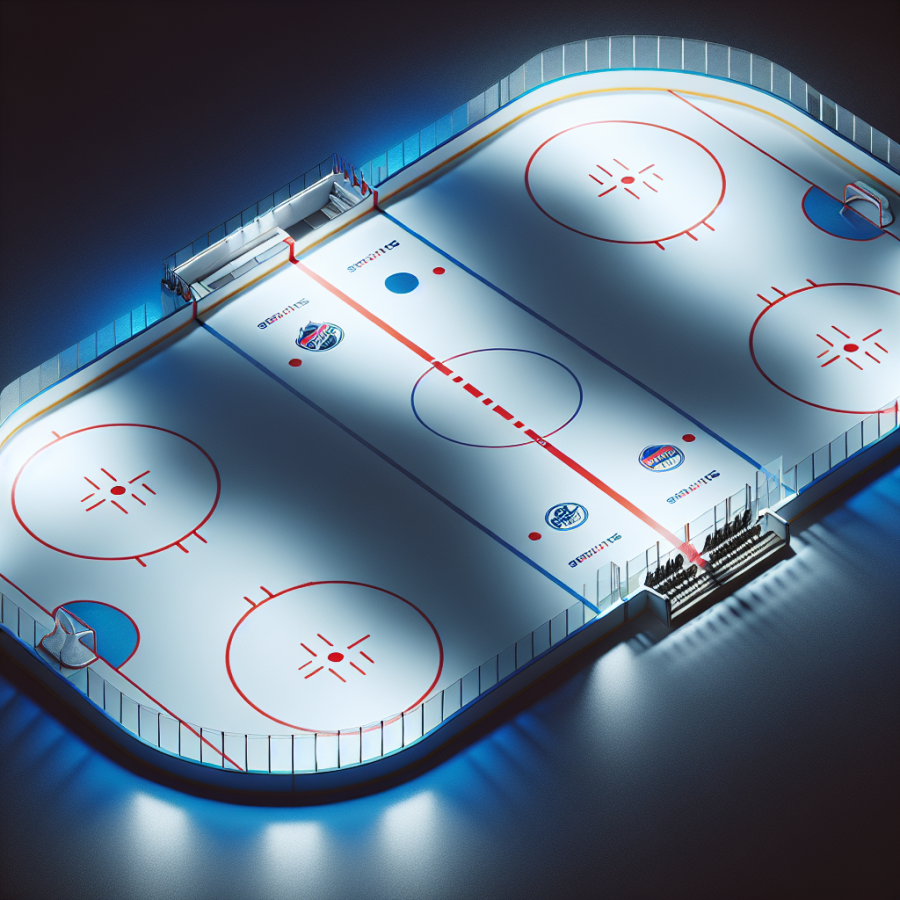Understanding the Significance of Face-Off Circles in Ice Hockey Strategies
Face-off circles in ice hockey are far more than just designated areas for initiating play. They are a critical component of team strategies and can significantly influence the flow and outcome of the game. A face-off win in these circles can give a team immediate control of the puck, setting the tone for offensive drives or defensive stability.
Within the offensive zone, face-off circles play a pivotal role in goal-scoring opportunities. Winning a face-off here can lead directly to a shot on goal. Teams often have specific plays designed to execute upon winning an offensive zone face-off, utilizing their positioning to maximize shooting lanes or create diversions that open space for key players to take a shot.
Conversely, in the defensive zone, the importance of face-off circles is underscored by the need for possession to alleviate pressure from the defending team. A lost face-off in the defensive zone can be costly, allowing the opposing team an immediate chance to attack the net. For this reason, centers and wingers who are adept at winning face-offs are particularly valuable in defensive scenarios.
The neutral zone face-off circles, though not immediately adjacent to either goal, also serve a strategic purpose. They can be instrumental in gaining control of the puck to establish the pace of the game or to facilitate a line change while in possession, which can lead to tactical advantages.
Positioning during a face-off is also crucial. Players often line up in various formations around the circles based on their team's strategy and the game context. These formations are designed to optimize puck retrieval or to impede the opposing team's players from gaining an advantage after the puck is dropped.
Special teams also factor into the strategic use of face-off circles. During power plays, the attacking team has an advantage in numbers, and winning a face-off can allow for immediate and potentially game-changing offensive setups. On the penalty kill, the defensive team's ability to win a face-off and clear the puck out of the zone can drain valuable seconds off the opposing team's power play.
Coaches often analyze face-off statistics to decide which players are the most effective in the circle and to determine their strategies for different game situations. A player's face-off win percentage is a critical statistic that coaches use to guide their decision-making, perhaps even influencing their roster choices and line combinations.
In summary, understanding the strategic significance of face-offs, and subsequently the face-off circles, is essential for any team looking to maximize its performance on the ice.
Read also:
1. “Unveiling the Athleticism: Why Golf Truly is a Sport”
Analyzing the Impact of Face-Off Success on Game Outcomes
The subtle chess match at the face-off circle is often overlooked by casual hockey fans, but its significance is paramount in the grand scheme of a fast-paced game. Winning a face-off can control the tempo, give possession, and create immediate offensive opportunities or much-needed defensive clearances.
In critical zones, such as during a power play or in the waning moments of a game, the impact of face-off success becomes even more pronounced. Teams with a high percentage of face-off wins often find themselves with an extra edge, a crucial advantage in the possession game. Data analysis on face-off wins and game outcomes has illuminated a strong correlation between the two, with teams excelling in face-off circles generally finding more success on the scoreboard.
Statistically, each face-off win contributes to puck possession time, which is a key factor in generating scoring opportunities and preventing the opposing team from creating their own. A study on face-off success rates and their influence on puck possession demonstrates that teams that consistently win face-offs enjoy superior puck control, leading to more shots on goal and, consequently, a higher number of goals scored.
Moreover, face-offs can also play a pivotal role in disrupting the momentum of the game. Winning a draw after conceding a goal can provide a team the control needed to settle the pace and reorganize. Conversely, losing a key defensive zone face-off can be a prelude to heightened pressure from the attacking team, which can snowball into additional scoring threats. Thus, not all face-offs carry equal weight; their significance can be magnified by the situation and the game context.
Defensive zone face-offs demand particular attention. The consequences of losing a draw in this area can be immediate and dire, with the opponent often already positioned for an optimal scoring chance. The ability of centers to win these draws frequently underpins a strong defensive strategy, directly influencing the number of goals against and, by natural extension, the likelihood of winning a game.
Special teams face-offs are another piece of the strategic puzzle, shaping the outcome of power plays and penalty kills. The initial control of the puck on a power play can be the difference between establishing an effective set-up and squandered seconds off the penalty clock, underscoring the heightened impact of face-off prowess in these scenarios.
Delving into the individual performance of centers in face-offs reveals the specialists in the art, the players who can be relied upon when the game hangs in the balance.




